
Germany - steam locomotives
For a full scale picture, please click on the picture shown !

Germany is full of museum railroads and railroad museums and there are also
numerous steam machines operating touristic trains. This one is a class 50 cargo steam engine from pre-WWII times, here owned
by WTB and operating on the so called Sauschwänzlebahn (pig's tail railroad). Picture at Zollhaus Blumberg 18.7.2007 by Ilkka Siissalo.
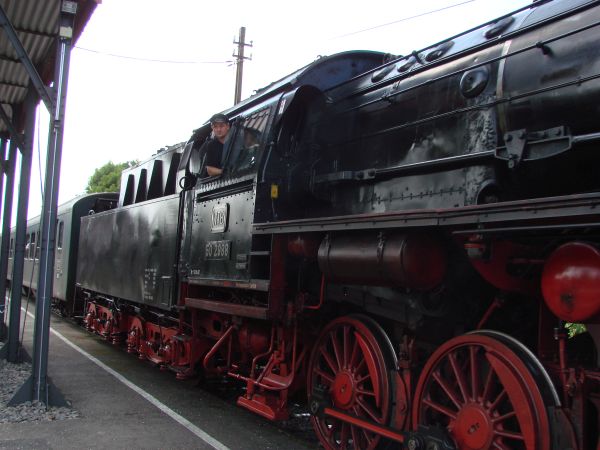
Another picture of the Sauschwänzlebahn Br 50 at Zollhaus Blumberg. Picture 18.7.2007 by
Ilkka Siissalo.
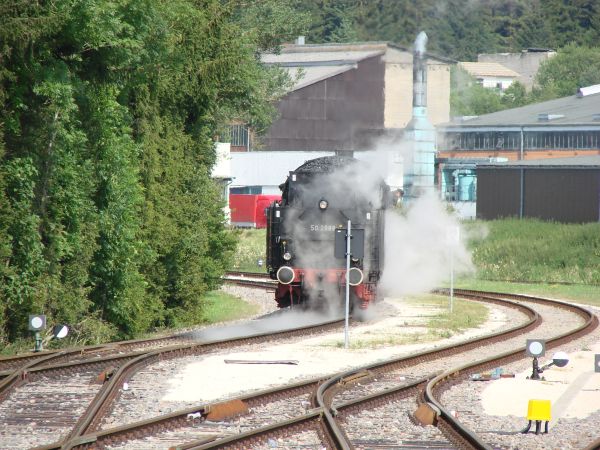
Same locomotive as above, moving it to the other end of the train. Sauschwänzlebahn Br 50 at Zollhaus Blumberg. Picture 18.7.2007 by
Ilkka Siissalo.

A German train just like they used to be in the 1950s: a Br 50 steam locomotive and so called Mitteleinstiegwagen coaches.
Photo from
Zollhaus Blumberg 18.7.2007 by Ilkka Siissalo.

Still the same train as above. Photo from
Zollhaus Blumberg 18.7.2007 by Ilkka Siissalo.
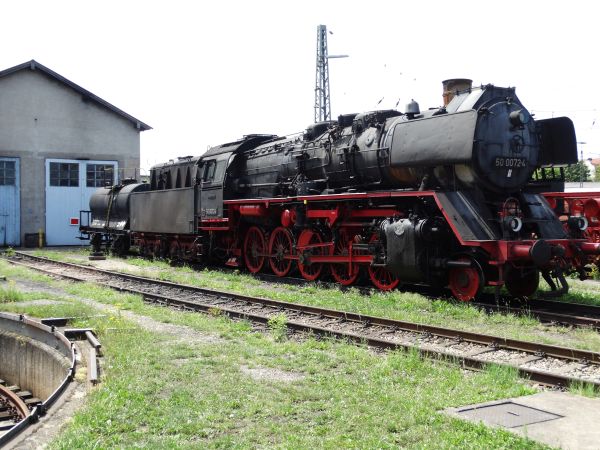
Another Br50 machine, the no. 0072. This one was built by Krauss-Maffei in München in 1940. Br50 had one leading axle and five
coupled axles and it was a very good and reliable cargo machine. 3160 locomotives of this type were built at numerous factories
1939 to 1948.
Picture from the Bayerisches Eisenbahnmuseum (Bavarian railway museum) in Nördlingen 3.7.2019 by Ilkka Siissalo.
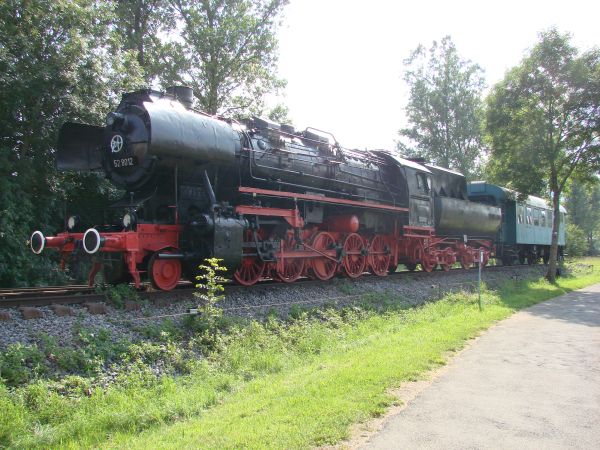
This is the famous Br 52 Kriegslok or war locomotive of Hitler's Nazi Germany. It was a simplified version of the Br 50 shown above.
It was one of the most built steam locomotive types
ever. It was built cheaply and fast and was intended to last in use only for 4-5 years, but tens of them have survived well over
60 years and while Hitler's army retreated, these locomotives were left behind everywhere from Soviet Union to Norway and France.
The wagon behind the locomotive is one of the three axle Umbauwagen, or rebuilt coaches, which were made by building a new upper
part on top of old cargo wagon undercarriages after the war.
Photo from Zollhaus Blumberg 18.7.2007 by Ilkka Siissalo.
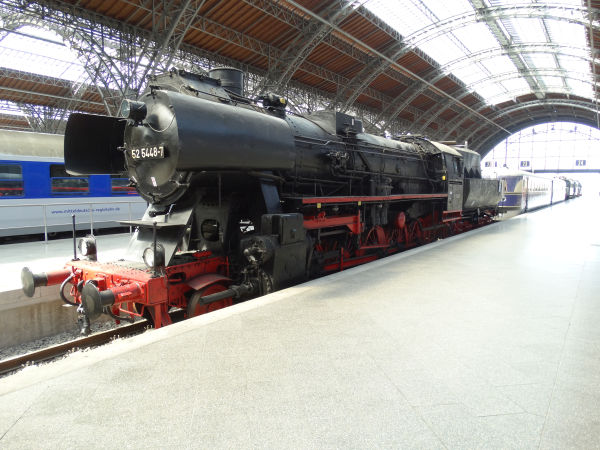
Another Br52 Kriegslok. This one is kept as a monument at the Leipzig main station.
Picture from Leipzig Hbf 16.7.2018 by Ilkka Siissalo.
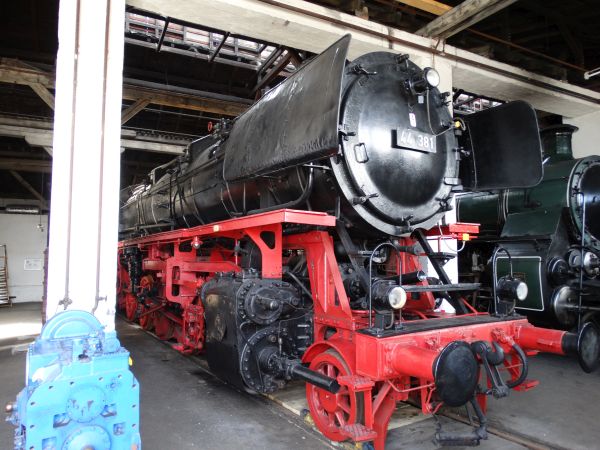
Baureihe 44 was a heavy cargo locomotive, a ten-coupler, which was originally designed with the very hilly landscape of the
German Mittelgebirge (central mountains) in mind. The first ones were built in 1926 and altogether a total of 1989 locomotives
of this type were built between 1926 and 1946.
Picture from the Bayerisches Eisenbahnmuseum (Bavarian railway museum) in Nördlingen 3.7.2019 by Ilkka Siissalo.
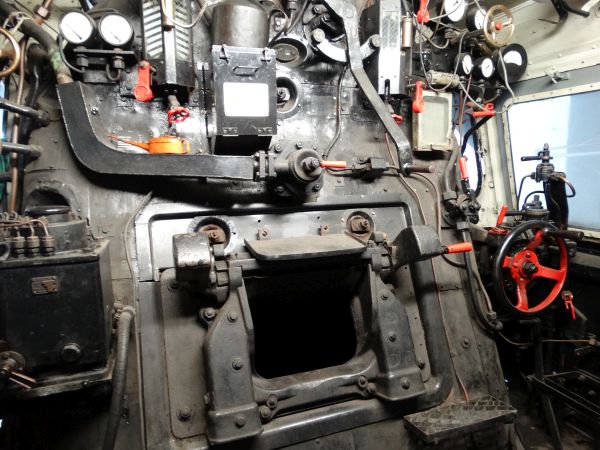
Inside view of Br44 no. 381.
Picture from the Bayerisches Eisenbahnmuseum (Bavarian railway museum) in Nördlingen 3.7.2019 by Ilkka Siissalo.
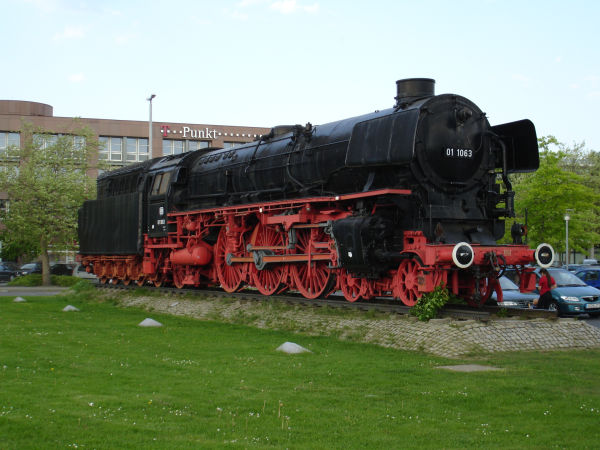
The class 01 was the biggest, fastest and most powerful of German express train steam engines (if we forget for a while some
experimental machines). This one, 01 1063 has been set up as a monument in front of the main station of Braunschweig.
Picture at Braunschweig Hauptbahnhof 12.5.2006 by Ilkka Siissalo.
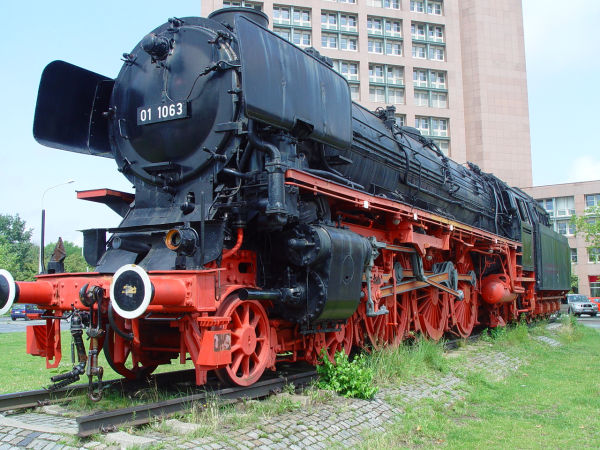
Another picture of the same class 01 as above.
Picture at Braunschweig Hauptbahnhof 12.5.2006 by Ilkka Siissalo.
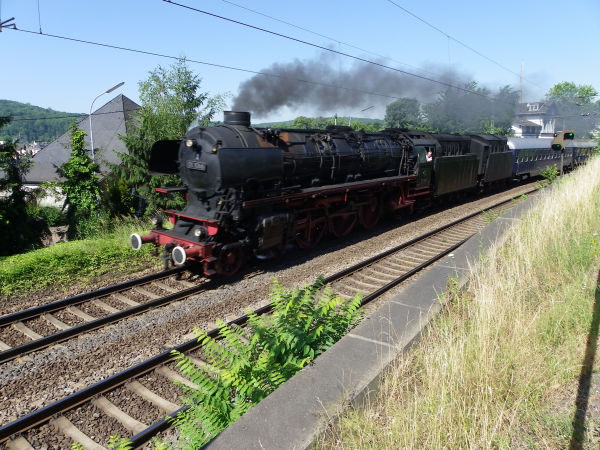
Express train steam locomotive 01 1066 owned by Ulmer Eisenbahnfreunde, railroad friends of Ulm, in full speed by Erpel 8.7.2010.
Picture by Ilkka Siissalo.
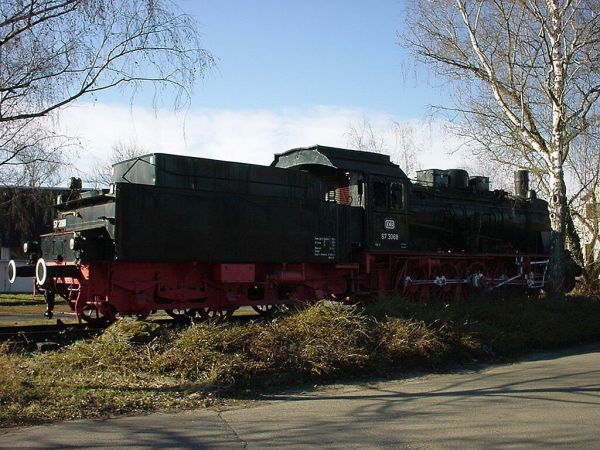
Old DB class 57 locomotive, raised as a monument at the old DB depot. Class 57 was originally the old Prussian G 10. They
were built 1910 to 1925 and the last ones were retired from service in 1968.
Picture from Haltingen 3.2.2002 by Ilkka Siissalo.
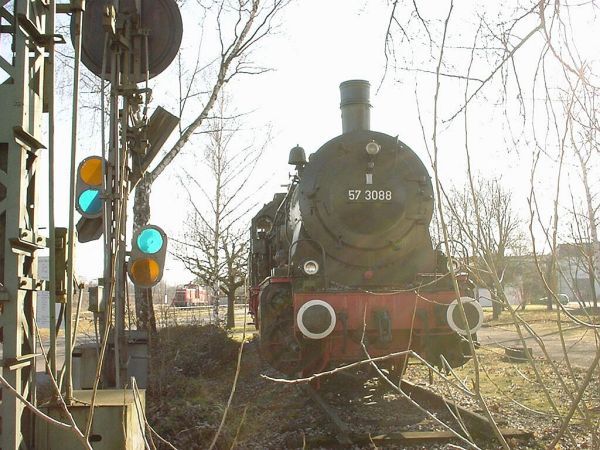
The same class 57 machine as above, but here seen from its front.
Picture from Haltingen 3.2.2002 by Ilkka Siissalo.
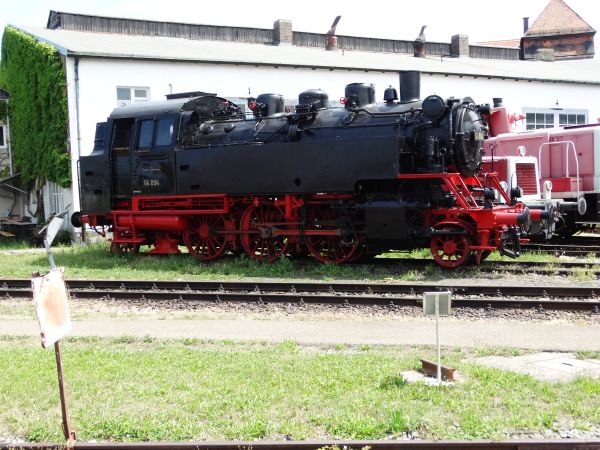
Br64 nicknamed "Bubikopf" was a light steam engine intended for passenger traffic especially on short routes. A total of
520 locomotives of this type were built 1928 to 1940 in various factories. This one, no. 094 was built by Maschinenbauanstalt
Humboldt at Köln-Kalk in 1928. The last Bubikopf engines were retired from active use in 1975 in West Germany but some 20 are
still in working order.
Picture from the Bayerisches Eisenbahnmuseum (Bavarian railway museum) in Nördlingen 3.7.2019 by Ilkka Siissalo.
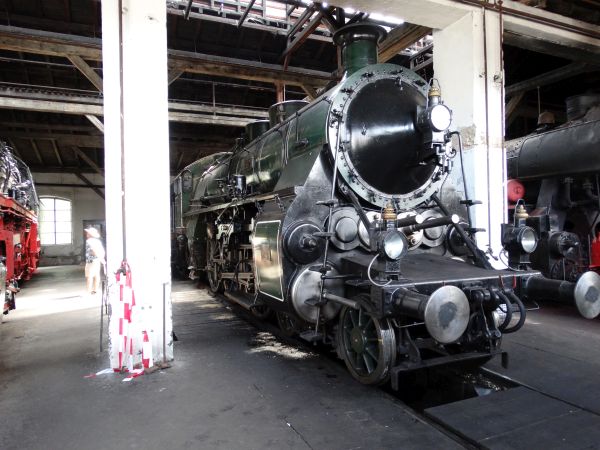
This one is a class Br 18, former Bavarian S 3/6 no.4536 from the year 1918. It is in full working order and carries today the European
register number 90 80 0018 478-2 D-BYB. It was built by locomotive company J.A. Maffei in München.
Picture from the Bayerisches Eisenbahnmuseum (Bavarian railway museum) in Nördlingen 3.7.2019 by Ilkka Siissalo.
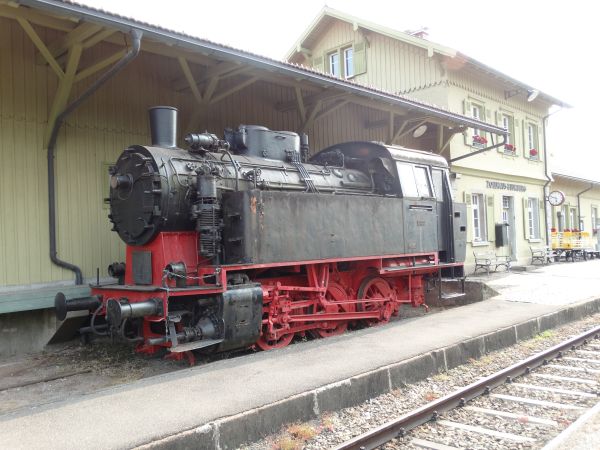
At first glance this one looks like a Br80 switcher from the 1920s, but it's not. It is definitely longer and differs in many details. This
is an industrial locomotive built by Maschinenfabrik Esslingen in 1952. Only two locomotives of this type were ever built. This one was used
by the Lonza factories and it was known as Lonza Werkslok 105. It is now being kept at a small railway museum at the station of Zollhaus Blumberg
in southern Germany.
Picture from Zollhaus Blumberg 10.7.2023 by Ilkka Siissalo.
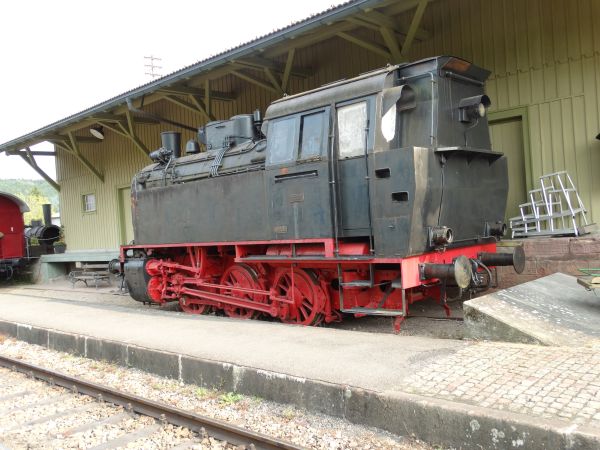
The same industrial locomotive as shown above, but now seen more from its behind.
Picture from Zollhaus Blumberg 10.7.2023 by Ilkka Siissalo.
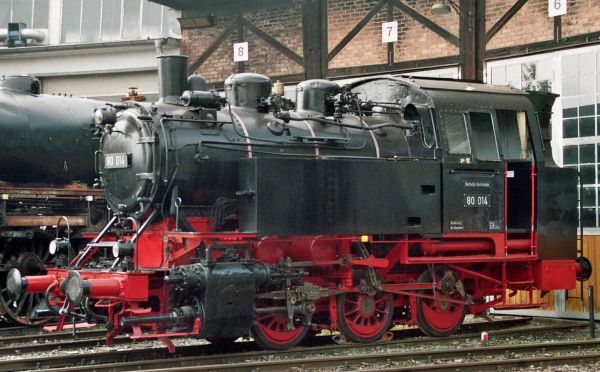
For comparison: A Br80 from the 1920s. As you can see it is markedly shorter and differs in many details.
Picture from Süddeutsches Eisenbahnmuseum in Heilbronn, taken in June 2007 by Sam Gamdschie. Published under the
Creative Commons CC BY-SA 3.0 license.
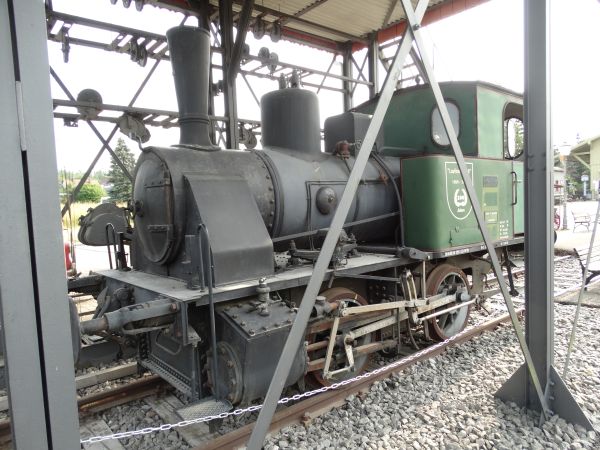
This E 2/2 ""Laufenburgerli" steam locomotive is a Swiss machine although it is now owned by the city of Blumberg in Germany.
Blumberg city is also the owner and supporter of the Wutachtalbahn and a small railway museum at Zollhaus Blumberg.
This machine used to belong to the Kraftwerk Laufenburg (power plant of the city of Laufenburg). The machine is from the year 1909-
Picture from Zollhaus Blumberg 10.7.2023 by Ilkka Siissalo.
Fireless steam tank locomotives
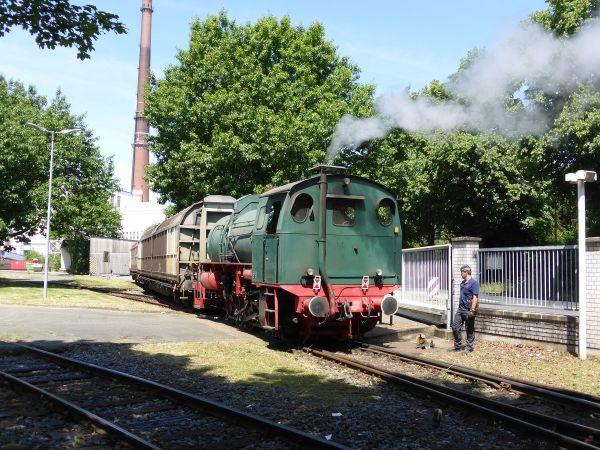
Many factories not only in Germany, but also elsewhere have commonly had tank locomotives which took their hot steam from a factory and
did not have any fire at the locomotive itself. They were clean and cheap to operate, but could not reach very far from the factory itself.
But for shunting at the factory area and hauling wagons to and from the nearest station they have been common. This fireless locomotive
is protographed in Osnabrück still in full use in 2015. Picture by Robert Sand.
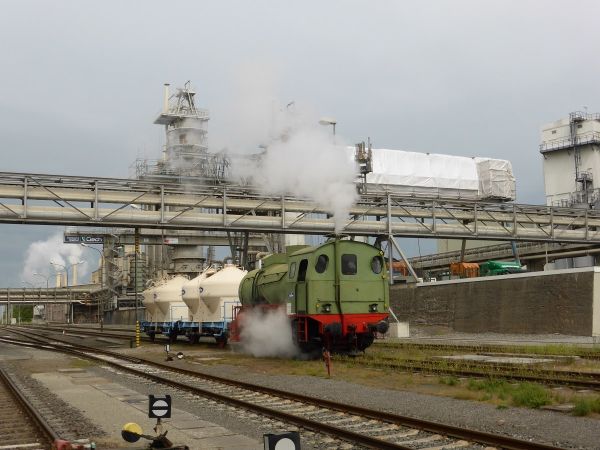
Another fireless steam tank loco in use in Staßfurt in 2017. Picture by Robert Sand.
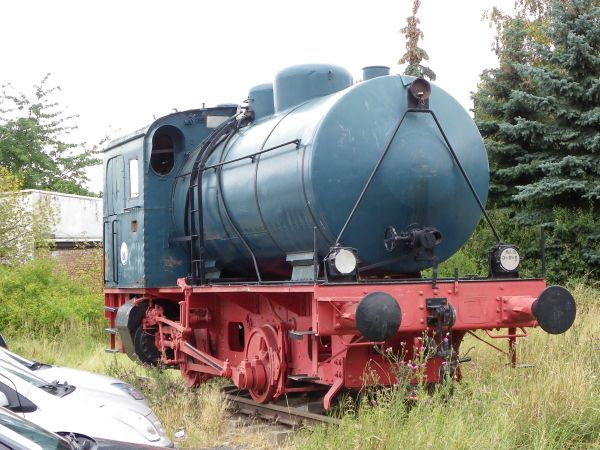
This fireless steam tank served for many years the sugar factory Pfeifer & Langen at Euskirchen before it was set up as a monument of the old
times close to the Euskirchen station.
Picture from Euskirchen 23.7.2011 by Ilkka Siissalo.
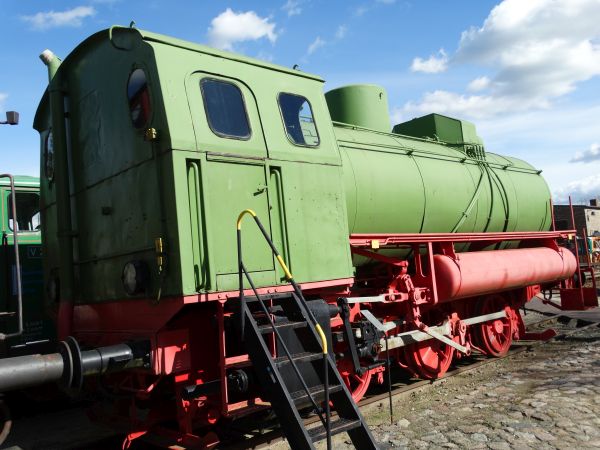
This is the former East German counterpart of locomotives shown above, built by LEW Hennigsdorf close to Berlin during the communist times of DDR.
This is very similar to the one shown from Staßfurt above.
Picture from Eisenbahnmuseum Gramzow 6.4.2017 by Ilkka Siissalo.
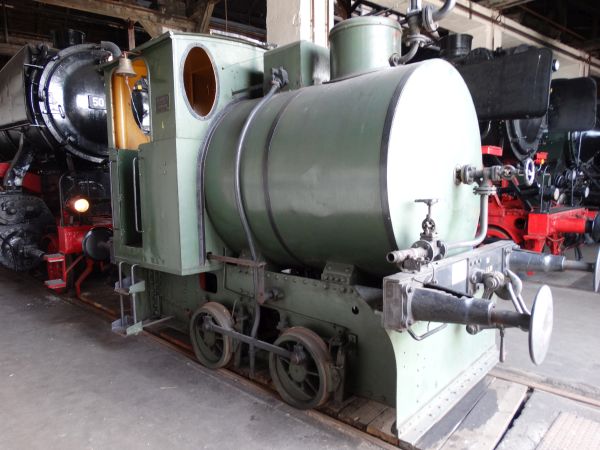
This steam tank locomotive no.4 was built by the locomotive builder J.Maffei in München in 1913. It is today kept at the Bavarian
Railway museum in Nördlingen.
Picture from the Bayerisches Eisenbahnmuseum (Bavarian railway museum) in Nördlingen 3.7.2019 by Ilkka Siissalo.
Foreign steam locomotives in Germany
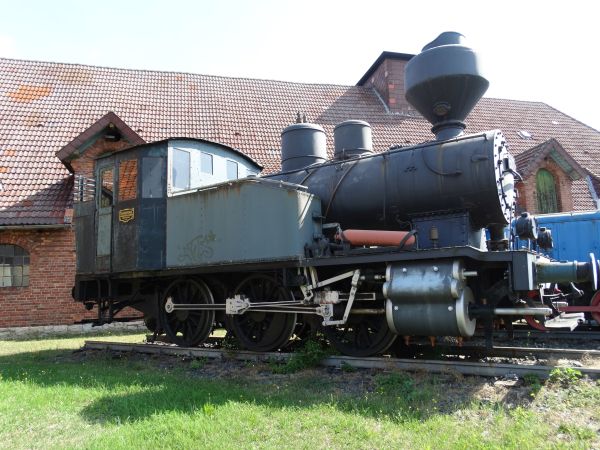
This is a Finnish state railways VR (Valtionrautatiet) class Vr1 shunter. Hanomag built in Salzgitter ten of these small locomotives 1921-23 and the Finnish
company Tampella (Tampereen Pellava) a further 30 1913-27. It was a powerful small switcher machine, but since it only had three axles, it had a nasty tendency
of entering into a swinging motion like a ship at rough seas. Because of this tendency it got in Finland the nickname Kana (=hen) because it moved in a similar
way like a walking hen. VR used these machines between 1913 and 1975. This individual no.670 was donated to Salzgitter Schloss Salder in 2003. It is now
rusting in a park at Salzgitter-Salder. This one was built in Hannover 1923.
Picture from Salzgitter 14.7.2023 by Ilkka Siissalo.

The same VR Vr1 "Kana" seen from the other side.
Picture from Salzgitter 14.7.2023 by Ilkka Siissalo.
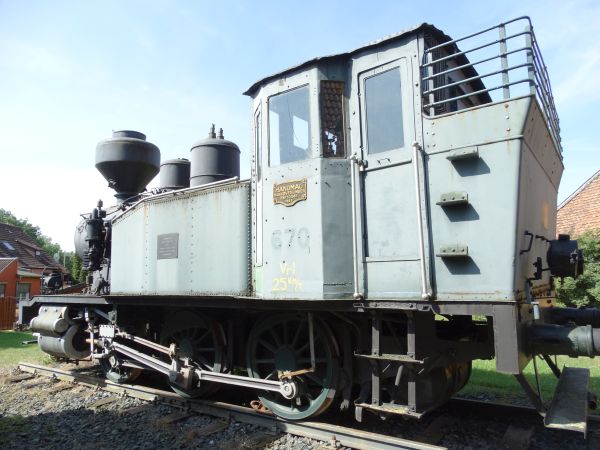
Still the same VR Vr1 "Kana".
Picture from Salzgitter 14.7.2023 by Ilkka Siissalo.

